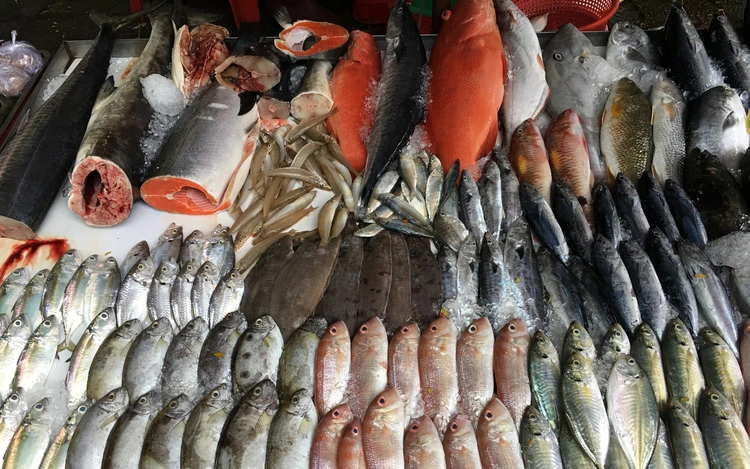
Many types of fish are sold at a local market in Ho Chi Minh City. Photo: Dong Nguyen / Tuoi Tre News
Whilst the famous dishes, like beef and chicken pho, are well known around the world, when you get into the real culture of local Vietnamese you will find them picking away at a cooked fish with thousands of bones or eating smelly sauces that smell like a worn-out shoe.
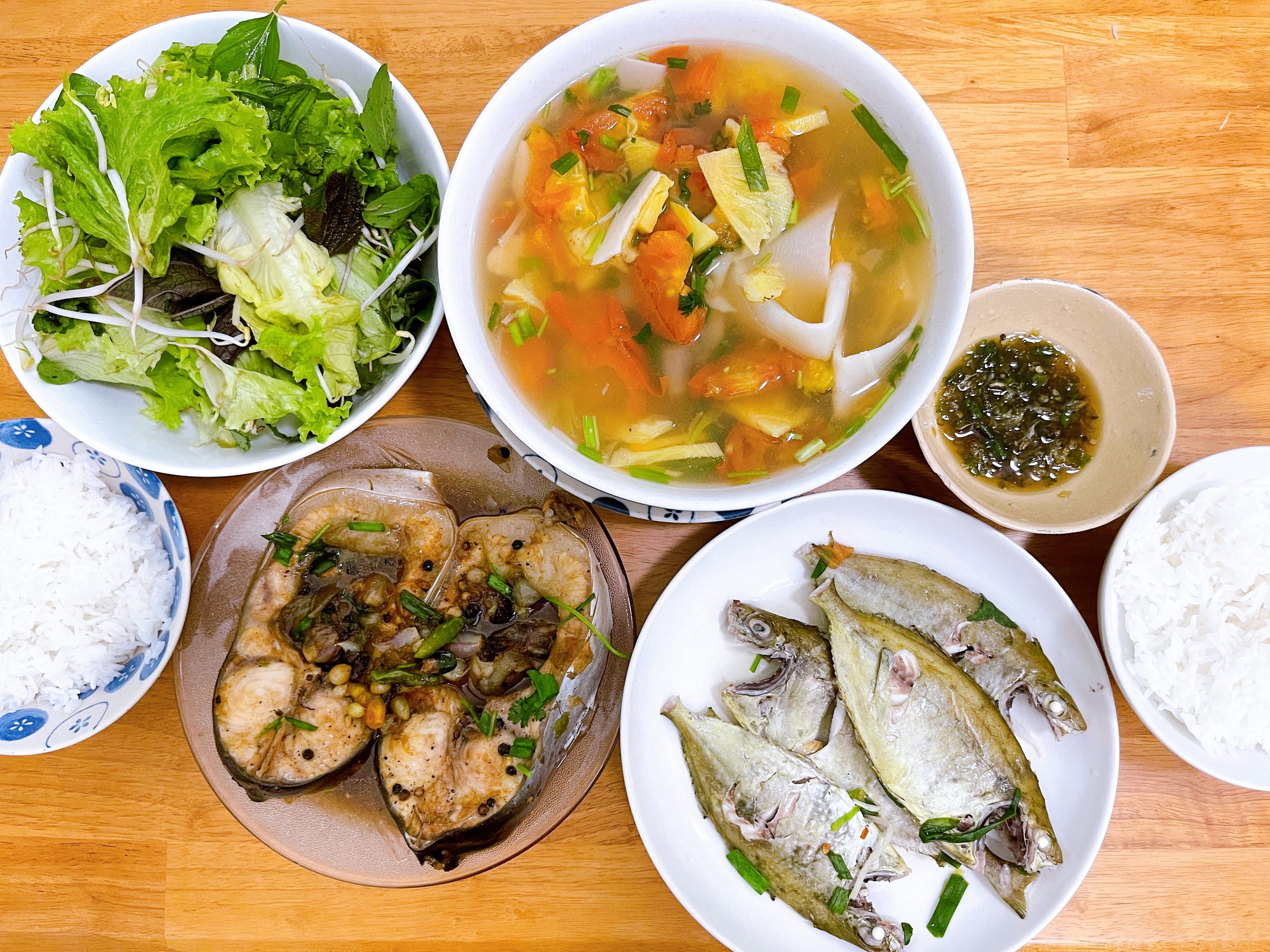
Fish dishes are common in Vietnamese daily meals. Photo: Dong Nguyen / Tuoi Tre News
With a 3,260km coastline and around 4000 islands, plus the major river systems including the Red River, the Perfume River, the Saigon River and the Mekong Delta in the south, a great majority of the 100 million residents live within a reasonable distance of a river or the coast.
In the Western world, small boned fish are not appealing because of the difficulty to eat it and the perceived dangers of accidentally swallowing a bone and getting it lodged in your throat.
In Vietnam, live seafood of all varieties sits in buckets and tanks with water pumps circulating local sea water and fresh water to maintain the life of the fish and crustaceans until they are sold to locals for almost immediate consumption. This is an iconic part of Vietnamese culture.
Whole fish with guts and bones? No problem
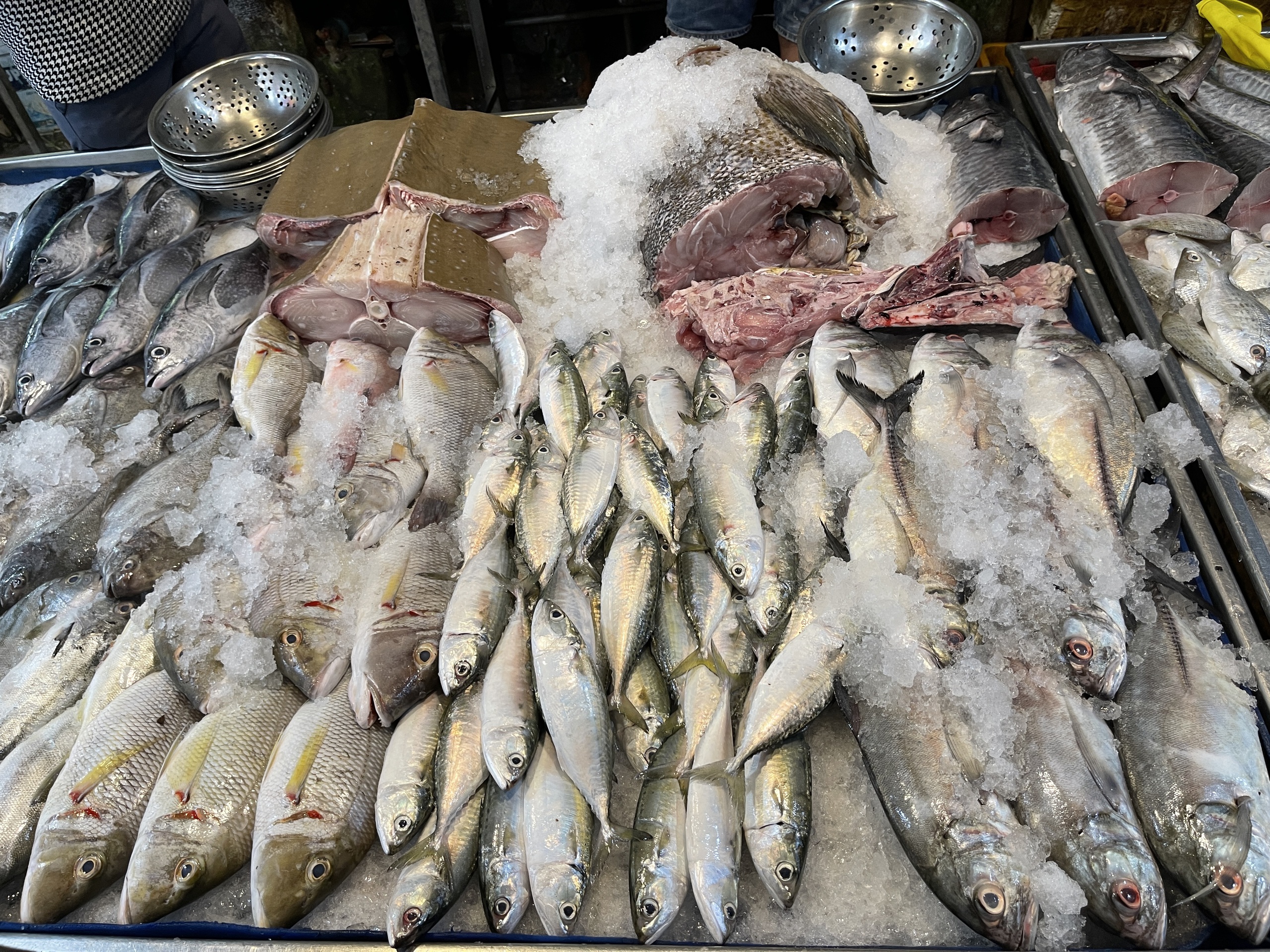
Many types of fresh fish are sold at a local market in Ho Chi Minh City. Photo: Dong Nguyen / Tuoi Tre News
One particular dish that has made its mark on the local culture is lau ca keo. These long thin fish are, in Western terms, difficult and awful to eat. They are about as long as a drinking straw and not fat. The entire body is littered with small bones.
Whilst they can be barbecued, the most famous way of eating them is in a hotpot. And it is not just any normal hotpot. In the true Vietnamese tradition, a good fish is a fresh fish. This is why these fish go directly from the tank to the boiling hotpot as part of the preparation process.
It really is a sight to behold. The boiling hotpot is placed on the table and a basket full of about eight fish is upended into the bubbling water. A frenzied reaction takes place but only lasts a few seconds as the fish die very quickly in the hot broth.
Then, within a minute or two, they are dished up onto your plate for eating. There really can be no fresher fish than that.
But eating them brings a new challenge. With the entire animal on your plate, removing edible parts of the fish is a challenge. There is a bitter section near the head that comes from the organs of the fish and the bones are very sharp and very small. It is not a meal to eat quickly.
It is not only fish that are iconically unique to Vietnam. Snails, mussels, and other river and sea animals all make their way onto the plates of Vietnamese consumers. Oc (sea snails) are a range of ugly, small and sometimes difficult-to-eat animals.
Usually served with a range of sauces, including the famous fish sauce of Vietnam, these are as common as fish and chips on a Friday night back home.
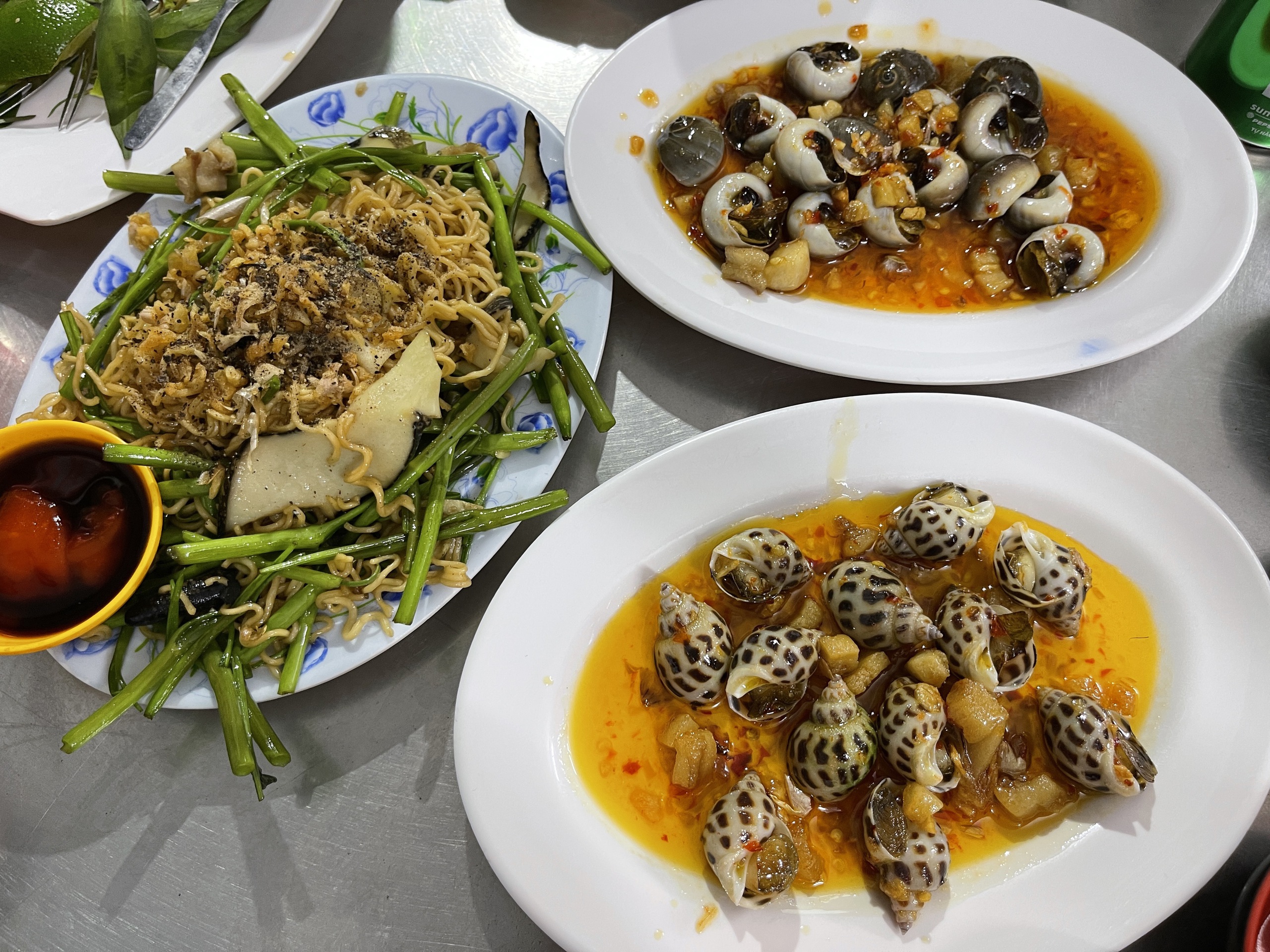
Shellfish dishes are served at an eatery in Phu Nhuan District, Ho Chi Minh City. Photo: Dong Nguyen / Tuoi Tre News
But they are a food that you need to adjust to when looking at them. In short, they look awful, but the taste is actually much better than you would expect. And like the fish, most restaurants try to keep them alive until cooking to ensure the freshness of the food.
Fermented fish: An indispensable part of Vietnamese cuisine
Condiments from the sea have also supported national cuisines for centuries. Fish sauce (nuoc mam) is as common to the Vietnamese cuisine as ketchup is to a hamburger.
This fermented fish sauce is a salty and flavorsome condiment. Whilst made with the same traditions and processes for centuries, the regional flavor variations bring a pride that is talked about by locals across the country. You will often hear "Our fish sauce is the best in Vietnam" as you travel through the coastal provinces north and south.
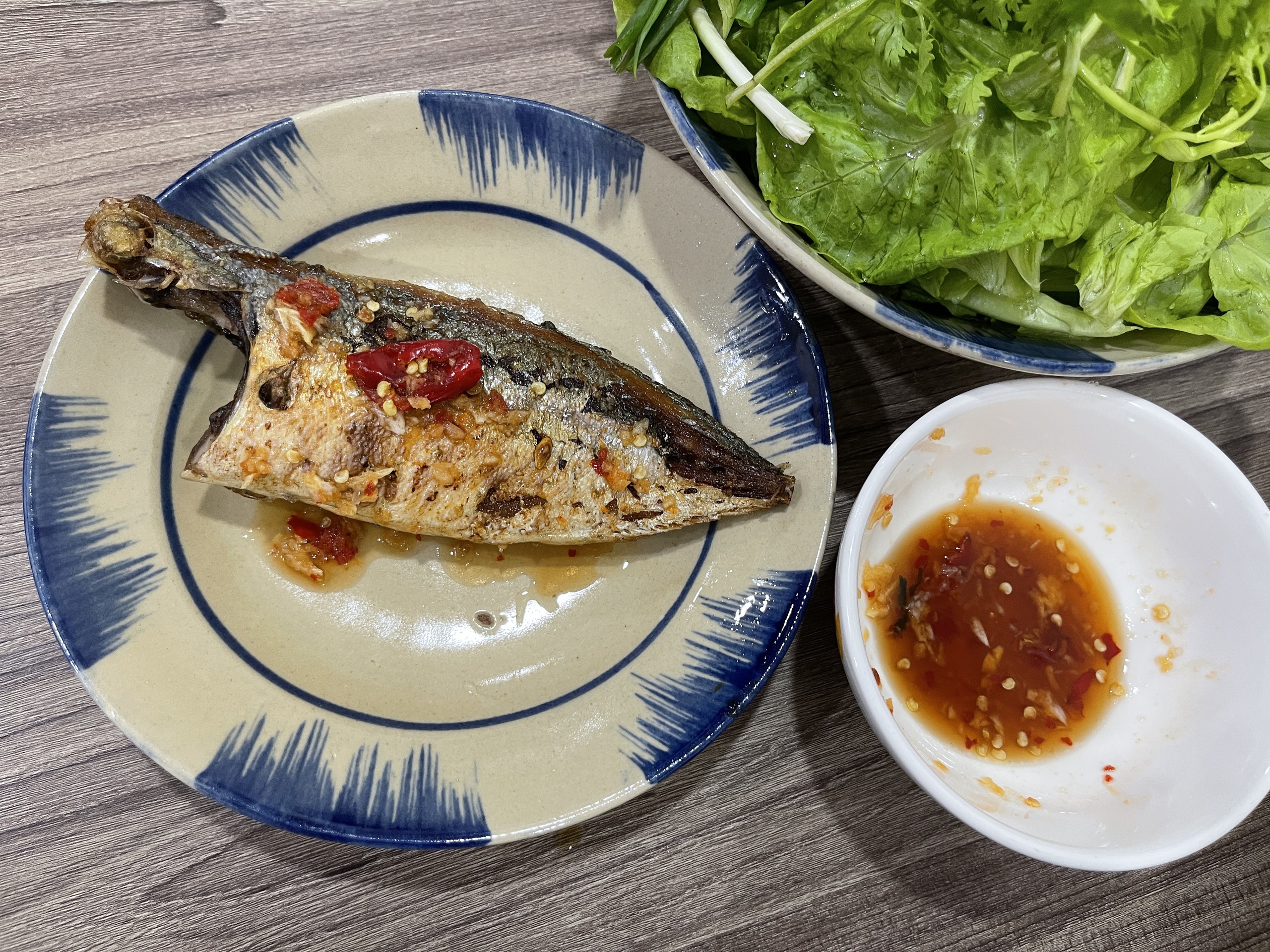
Fried fish served with chili fish sauce is common in Vietnamese daily meals. Photo: Dong Nguyen / Tuoi Tre News
Less popular but equally admired by the community is the fermented shrimp paste (mam tom). This rotten-smelling brownish-red mix of dead rotten shrimp is just repulsive to first-time users. It has been known to induce gagging and vomiting in those trying it for the first time.
However, when you adjust to the smell of mam tom, and place it in the right quantity in a dish, it does become a wonderful taste sensation to compliment a range of foods in Vietnam.
From the north is one of my favorite dishes. Bun dau mam tom is a quick and healthy meal with a balance of green salads, meats and tofu. The sauce for this shared plate is made up of the mam tom with kumquat, chili, and sugar.
I prefer it saltier and spicier, so I don't add the sugar to the sauce. It is fun to sit with your friends and roll up a selection of food items then dip them into the pungent mixture, and it goes in your mouth for a salty, spicy, and fresh sensation. It is one of my favorites in Vietnam.
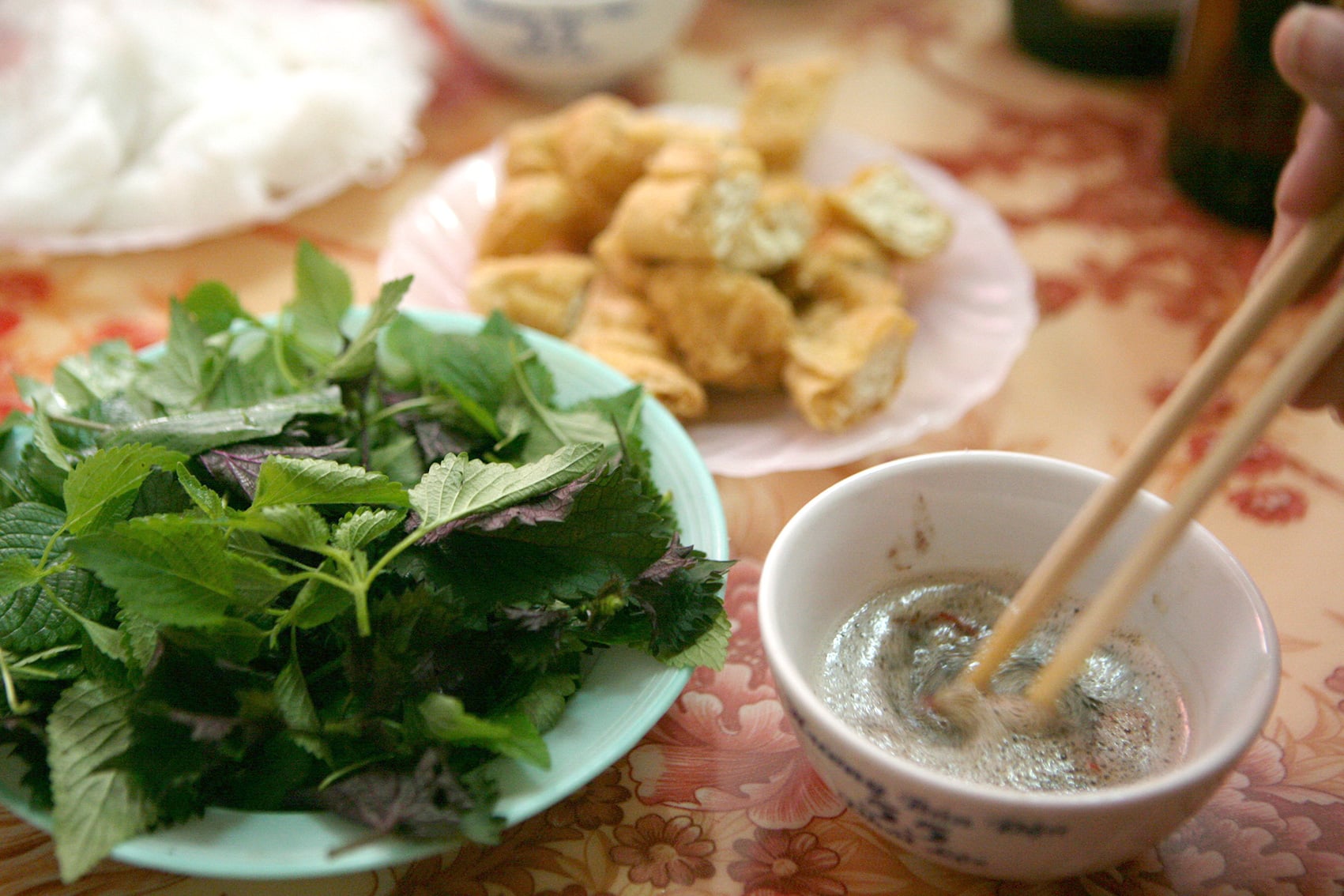
A diner stirs 'mam tom' (fermented shrimp paste) to blend the seasonings together before eating. Photo: Gia Tien / Tuoi Tre
Real Vietnamese cuisine is far removed from anything that is experienced across the Western world.
I still have a love for a beef pie and a hamburger, but I have also developed a true love for the 'fishy' varieties of tastes that are often uniquely Vietnamese. These tastes proudly define a region, a history and what it means to be Vietnam. We should appreciate each of them and remember that these tastes came from generations of love and the will to survive in tough times.


Max: 1500 characters
There are no comments yet. Be the first to comment.